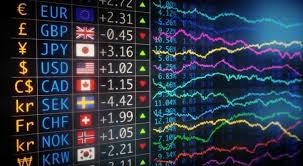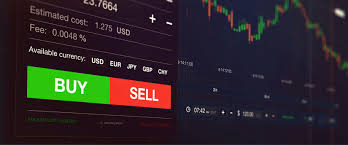Understanding Forex Trading A Comprehensive Guide 1835742672

Understanding Forex Trading: A Comprehensive Guide
Forex trading, or foreign exchange trading, is the act of buying and selling currencies on the foreign exchange market. This market is the largest and most liquid financial market in the world, with an average daily trading volume exceeding $6 trillion. what is forex trading https://acev.io/ can potentially open up new financial opportunities and empower traders with the ability to make money through currency fluctuations.
What is Forex Trading?
Forex trading involves the exchange of one currency for another, usually in pairs such as EUR/USD (Euro/US Dollar) or GBP/JPY (British Pound/Japanese Yen). When trading currencies, traders speculate on whether a currency will strengthen or weaken against another currency. For instance, if a trader believes that the Euro will gain strength against the US Dollar, they will buy the EUR/USD currency pair. Conversely, if they believe it will weaken, they would sell it.
The Forex Market
The forex market operates 24 hours a day, five days a week, and is decentralized, meaning it does not have a physical location or central exchange. Transactions take place electronically over-the-counter (OTC) through a network of banks, brokers, and individual traders. This continuous trading cycle is divided into major sessions—Asian, European, and North American—where different currencies see varying levels of activity and volatility.
How Does Forex Trading Work?
At its core, forex trading relies on currency pairs, which represent how much of the second currency is needed to purchase one unit of the first currency. For example, in the EUR/USD pair, if the exchange rate is 1.20, it means that 1 Euro is equivalent to 1.20 US Dollars. Traders can make a profit by buying a currency pair at a lower price and selling it at a higher price, or by selling a currency pair at a higher price and buying it back at a lower price.
Types of Forex Traders
Forex traders can be categorized into different types based on their trading style:

- Day Traders: Engage in short-term trading, looking to capitalize on small price movements within a single day.
- Swing Traders: Hold positions for several days or weeks to take advantage of expected price movements.
- Scalpers: Make numerous trades throughout the day to profit from small price changes.
- Position Traders: Hold onto trades for months or even years, relying on long-term trends.
Technical and Fundamental Analysis
Traders use two primary forms of analysis to guide their trading decisions: technical analysis and fundamental analysis. Technical analysis involves analyzing price charts and using indicators to forecast future price movements based on historical data. Traders often look for patterns, trends, and support and resistance levels to make trading decisions.
Conversely, fundamental analysis focuses on economic, social, and political factors that can influence currency values. Key economic indicators such as interest rates, employment rates, and Gross Domestic Product (GDP) reports can provide insights into the strength or weakness of a currency. Traders who employ fundamental analysis keep a close watch on news and events that can affect the forex market.
Leverage and Margin in Forex Trading
One of the key features of forex trading is the use of leverage. Leverage allows traders to control a larger position size with a smaller amount of capital. For example, if a broker offers a leverage of 100:1, a trader can control $10,000 worth of currency by only providing $100 as margin. While leverage can amplify profits, it also increases the risk of losses. Traders should employ appropriate risk management strategies to protect their capital.
Getting Started with Forex Trading
For those interested in diving into forex trading, here are some steps to get started:
- Educate Yourself: Familiarize yourself with the basics of forex trading, market mechanics, and trading strategies.
- Choose a Reputable Forex Broker: Look for brokers with good reviews, regulatory compliance, and user-friendly trading platforms.
- Open a Trading Account: Sign up for a trading account with your chosen broker. Many brokers offer demo accounts, which allow you to practice trading without risking real money.
- Develop a Trading Strategy: Create a plan detailing your trading goals, risk tolerance, and preferred trading style. This strategy should include when to enter and exit trades.
- Start Trading: Begin trading on a demo account until you feel comfortable and confident enough to trade with real money.
- Continuous Learning: The forex market is dynamic, and continuous education is essential. Stay updated on market trends, economic events, and changes in trading strategies.
Conclusion
Forex trading can be a rewarding venture for those who take the time to understand the market dynamics and develop their trading skills. With its high liquidity and accessibility, forex trading presents numerous opportunities, but it also demands discipline, risk management, and adaptability. Whether you’re a seasoned trader or a complete novice, embracing education and a strategic approach will significantly enhance your chances of success in this fascinating financial arena.
